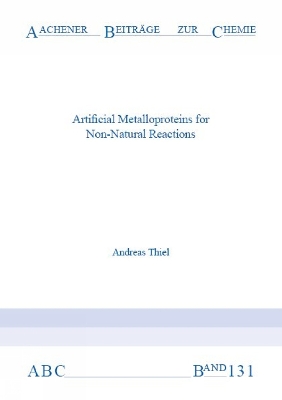Organometallic chemistry has shown tremendous success in developing new metal catalysts for industrial applications, e.g. polymerization, organic synthesis or fine chemical synthesis. Nowadays, several active and selective catalysts are known and still, the issue of activity and selectivity remains a challenge. Nature has solved this issue by evolving selective enzymes. These enzymes have excellent catalytic properties with high substrate specificity and product selectivity due to their specialized active site. However, the advantage of high product selectivity comes at the cost of a limited substrate scope. The shape of the active site is crucial for selectivity since it is responsible for highly efficient substrate recognition and orientation together with stabilization of reactive intermediates. The number of enzymatic processes in industry increased due to an increased demand of enantiopure products. The concept of biohybrid catalysts, also named artificial metalloproteins/-enzymes, represents an interdisciplinary field combining biology and organometallic chemistry. The ligands directly attached to the metal center form the first ligand sphere, whereas the second ligand sphere is given by the protein. Constructing artificial metalloproteins by merging these fields allows to combine the attractive features of both, homogeneous and enzymatic catalysis. Chemistry provides a broad library of organometallic complexes, which catalyze numerous challenging (non-natural) chemical reactions with a large substrate scope. Biotechnology provides with the protein scaffold and its second ligand sphere specific tunability for substrates, intermediates or catalysts to facilitate reactions or prevent different selectivities by sitedirectedmutagenesis.
- ISBN13 9783958863835
- Publish Date 22 February 2021
- Publish Status Active
- Publish Country DE
- Imprint Verlag G. Mainz
- Format Paperback
- Pages 188
- Language English
